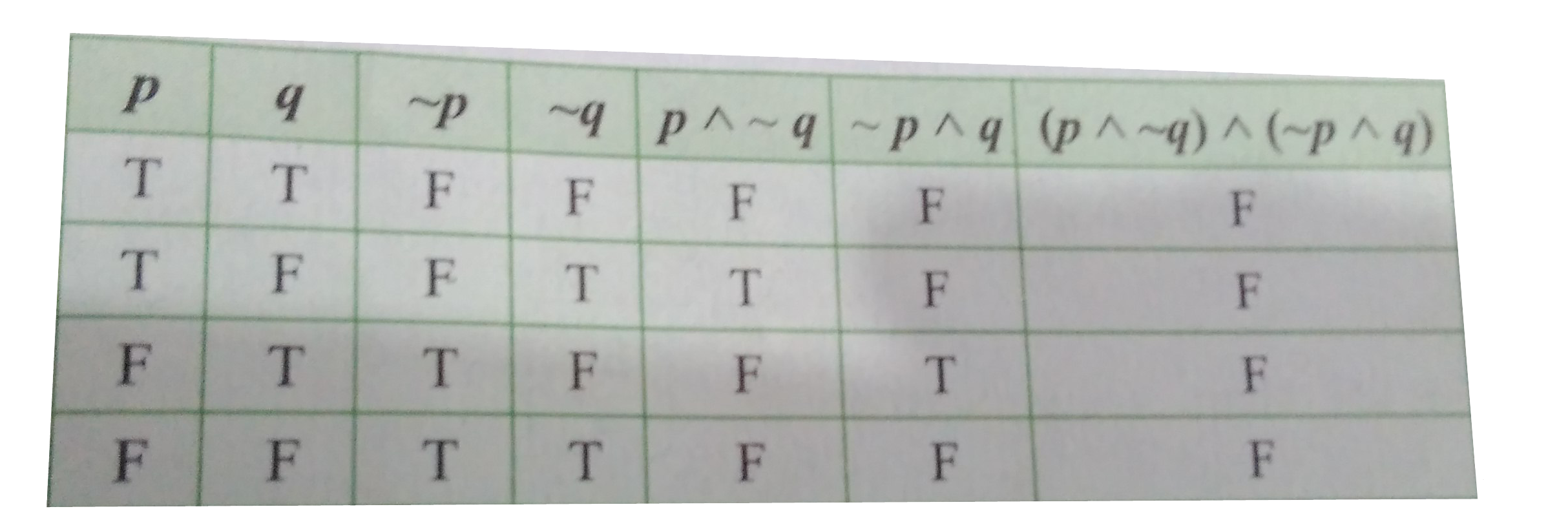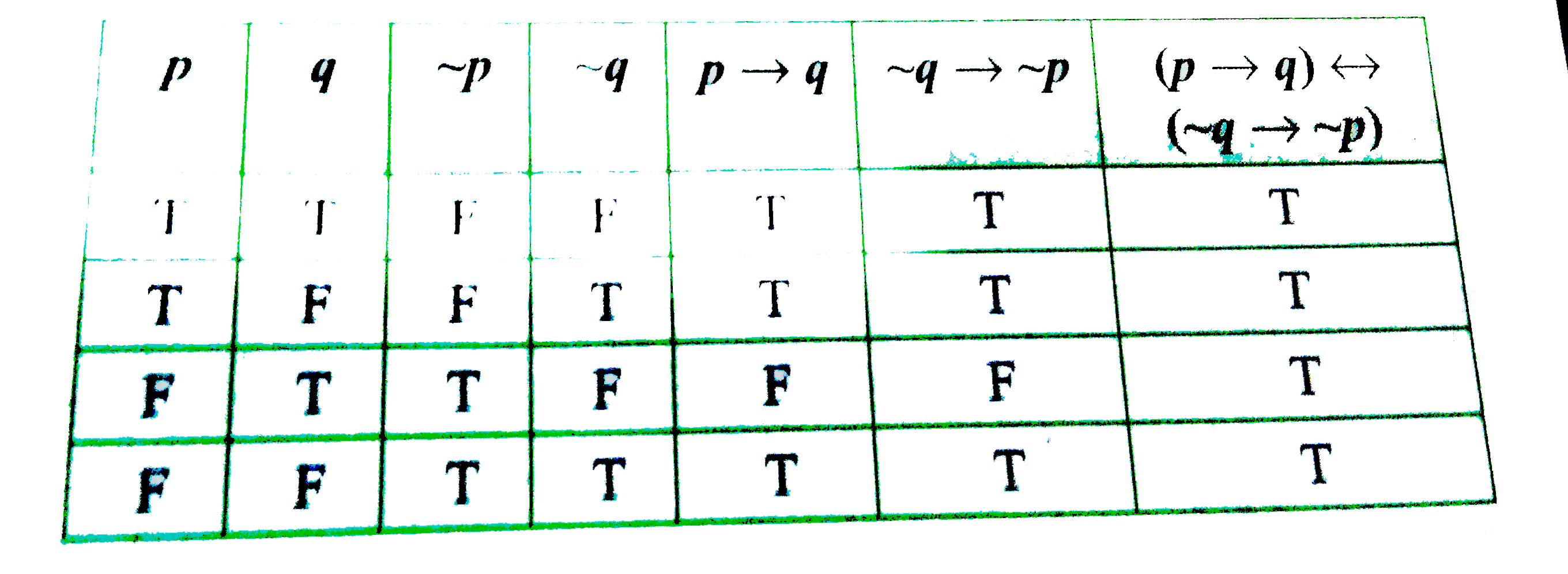Consider :
Statement I:
(p∧~q)∧(~p∧q) is a fallacy
Statement II: (p→q)↔(~q→~p) is a tautology
Statement-1 is true, statement 2 is true, statement 2 is a correct explanation for statement 1
Statement 1 is true, statement-2 is true, statement 2 is not a correct explanation for statement 1
Statement 1 is true , statement 2 is false,
statement 1 is false, statement 2 is true
The correct Answer is:B

It is fallacy

Topper's Solved these Questions
- MATHMETICAL REASONINGBOOK - CENGAGECHAPTER - MATHMETICAL REASONINGEXERCISE - Exercise (Single)
38 Videos
- LOGARITHM AND ITS PROPERTIESBOOK - CENGAGECHAPTER - LOGARITHM AND ITS PROPERTIESEXERCISE - JEE Previous Year
5 Videos
- MATRICESBOOK - CENGAGECHAPTER - MATRICESEXERCISE - Solved Examples And Exercises
165 Videos
Similar Questions
Consider : Statement I : (pˆ˜q)ˆ~pˆq is a fallacy. Statement II : (p→q)↔(~q→˜p) is a tautology. (1) Statement - I is True; Statement -II is true; Statement-II is not a correct explanation for Statement-I (2) Statement -I is True; Statement -II is False. (3) Statement -I is False; Statement -II is True (4) Statement -I is True; Statement -II is True; Statement-II is a correct explanation for Statement-I
View SolutionStatement-1 : (p∧~q)∧(~p∧q) is a facllocy.
Statement -2: (p→q)↔(~q→~p) is a tautology .
View Solution
Knowledge Check
Statements (p→q)↔(~q→~p)
Ais contradictionBis tautologyCis neither contradiction not tautologyDNone of theseStatement-1 : (p∧~q)∧(~p∧q) is a fallacy.
Statement -2: (p→q)↔(~q→~p) is a tautology .AStatement-1 is True, Statement -2 is Ture, Statement -2 is a correct explanation for statement -3BStatement-1 is True, Statement -2 is True,, Statement -2 is not a correct explanation for statement -3CStatement -1 is True , Statement -2 is false.DStatement -1 is False, statement -2 is True.Consider following statements Statement - I :
(p^~a)^(vpng) is a fallacy.
Statement - II : (p→q)↔(~q→~p) is a tautology.AStatement - I is true, statement -II is false.BStatement - I is false, Statement - II is true.CStatement - I true, Statement - II is true, Statement - II is a correct explanation for Statement - I.DStatement - I is true, Statement - II is true, Statement - II is not a correct explanation for Statement - I.
